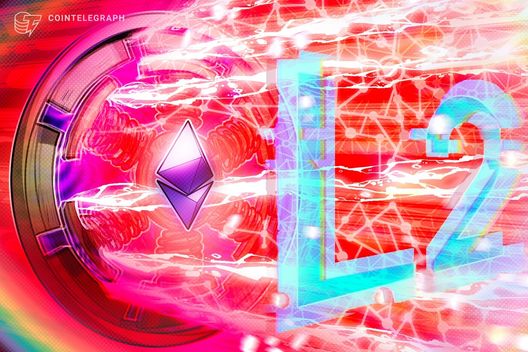Solana Co-Founder Challenges the Security Claims of Ethereum L2s
Anatoly Yakovenko, co-founder of Solana, argues that claims of Ethereum L2 networks inheriting security are flawed, highlighting key concerns.
In the ever-evolving landscape of blockchain technology, discussions around security and efficiency are paramount, particularly as the proliferation of decentralized finance (DeFi) and non-fungible tokens (NFTs) continues to gain momentum. Recently, Anatoly Yakovenko, co-founder of the Solana blockchain, has sparked a significant debate by asserting that claims suggesting Ethereum layer-2 (L2) networks inherit security from Ethereum’s mainnet are fundamentally flawed.
Layer 2 solutions are designed to enhance the scalability and transaction throughput of existing blockchains, primarily by processing transactions off the main chain while still leveraging the underlying security of the parent blockchain. For Ethereum, which has faced challenges related to high gas fees and slow transaction times, L2 solutions offer a promising avenue to alleviate these issues. Popular L2 solutions include Optimistic Rollups, zk-Rollups, and various sidechains that aim to improve speed and reduce costs.
Proponents of Ethereum L2 solutions often argue that these networks can inherit the security of the Ethereum mainnet due to their reliance on it for finality and consensus. This means that transactions validated on L2s are considered secure as long as they eventually settle on the Ethereum blockchain. However, Yakovenko's critique challenges this assumption, suggesting that the relationship between L2s and the Ethereum mainnet is not as straightforward as proponents contend.
Solana Co-Founder Challenges the Security Claims of Ethereum L2s One of Yakovenko's primary arguments revolves around the centralization issues prevalent in many Ethereum L2 networks. He posits that the design and operational structure of these networks create vulnerabilities that could undermine their security. For instance, some L2s may rely on a limited number of validators or operators, which can lead to central points of failure. If a small group of entities controls the majority of the validating power, the system could be susceptible to manipulation and attacks.
In contrast, Solana's architecture emphasizes high throughput and decentralization. The Solana blockchain uses a unique consensus mechanism called Proof of History (PoH), which allows it to process thousands of transactions per second while maintaining a decentralized network of validators. Yakovenko argues that this decentralization is crucial for ensuring robust security, as it minimizes the risk associated with centralized control.
Bitcoin Prices Surge Past $110K: What’s Driving the Market Dynamics? Another point raised by Yakovenko is the potential over-reliance of L2 networks on Ethereum for security. He suggests that if Ethereum's mainnet experiences issues—such as network congestion, high fees, or security breaches—those issues could cascade down to the L2 networks that depend on Ethereum’s security. This risk is particularly pertinent in the context of Ethereum's transition to proof-of-stake (PoS), which could introduce new vulnerabilities as the network undergoes significant changes.
Despite these criticisms, it is essential to recognize the potential benefits of L2 solutions in enhancing blockchain scalability. They can facilitate faster transactions and lower fees, which are critical for mass adoption of blockchain technology. However, Yakovenko’s insights highlight the necessity for developers and users to critically assess the security implications of using L2 networks.
The ongoing debate about the security of L2s invites a broader examination of the differences between Solana and Ethereum. Ethereum has established itself as a leading platform for DeFi and NFTs, but its scalability issues have prompted the rise of alternative blockchains like Solana that offer faster transaction speeds and lower costs.
Solana’s architecture is designed to handle high transaction volumes without compromising security. Unlike Ethereum’s L2s, which depend on the mainnet for security validation, Solana operates independently, allowing it to maintain its transaction integrity regardless of Ethereum's performance. This independence is a significant selling point for developers and projects looking for efficient and reliable blockchain solutions.
As the blockchain ecosystem continues to grow, it is crucial for stakeholders—including developers, investors, and users—to critically evaluate the security claims surrounding L2 solutions. While these technologies hold promise for improving Ethereum’s scalability, the assertions made by Yakovenko serve as a cautionary reminder of the complexities inherent in blockchain security. The future of L2 networks will likely depend not only on their ability to scale but also on their capacity to navigate the intricate security landscape that defines the blockchain space.
In an era where decentralization remains a core tenet of blockchain philosophy, it is essential to remain vigilant about the implications of centralization and the true sources of security in these innovative technologies. As the dialogue continues, it will be fascinating to see how the narrative around L2 solutions evolves and whether they can genuinely offer the security and efficiency that the blockchain community seeks.
Related Posts
Spot the Real Deal: Your Guide to Legit Crypto Projects
Feeling lost in the crypto world? Discover how to identify legit projects and avoid scams with my personal insights and smart strategies.
Your Easy Guide to Setting Up a Cryptocurrency Wallet
Overwhelmed by crypto? Learn how to set up your first wallet and securely store your digital assets with this beginner-friendly guide!
10 Smart Tips to Spot Legit Crypto Projects and Avoid Scams
Worried about crypto scams? Discover essential tips to identify legitimate projects and make smarter investments in the ever-evolving crypto landscape.
Mastering Bitcoin: Your Guide to Dollar-Cost Averaging
Feeling overwhelmed by Bitcoin’s price swings? Discover how dollar-cost averaging can help you invest stress-free and grow your crypto portfolio.
Finding Your Perfect Hardware Wallet for Crypto Security
Confused about which hardware wallet to choose for your crypto? Let me guide you through the essentials to secure your digital investments safely.
Blockchain Uncovered: Your Friendly Guide to the Future
Curious about blockchain? Join me as we simplify this groundbreaking technology and explore its benefits for you and the world around us!
